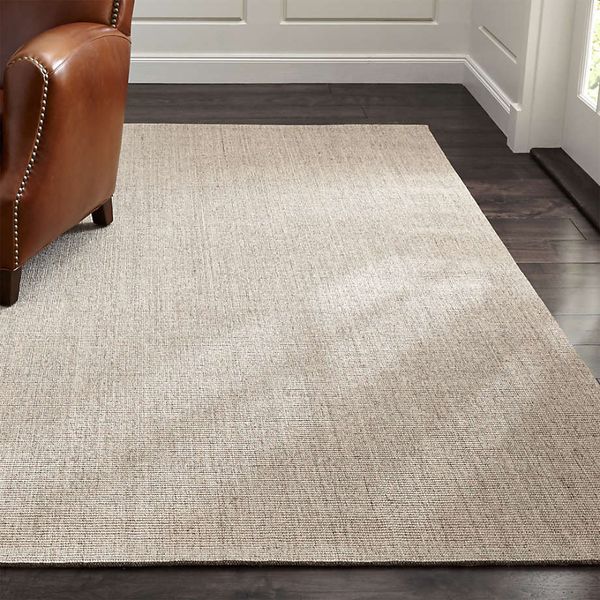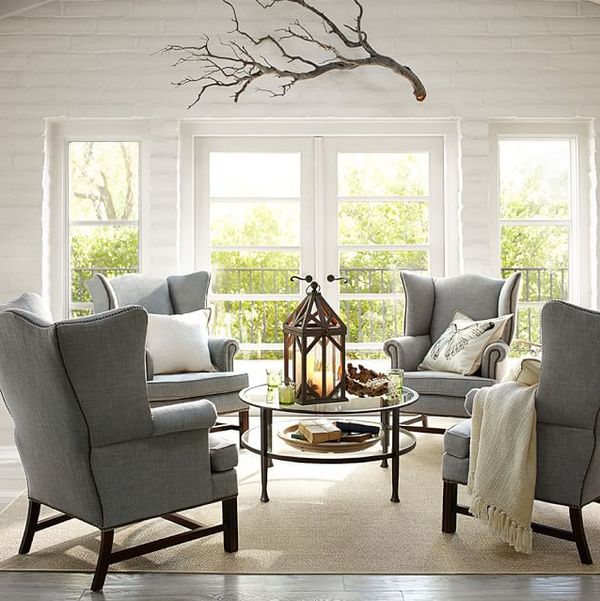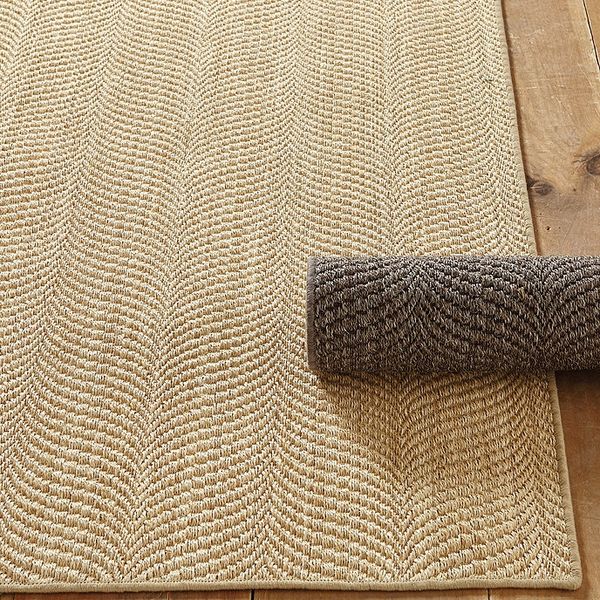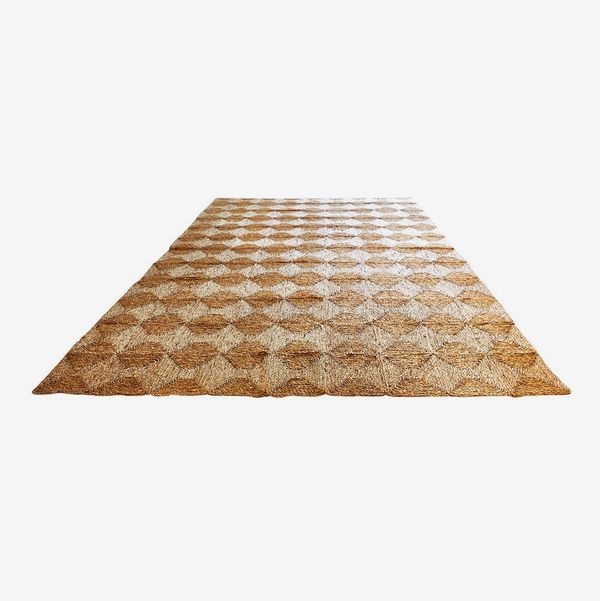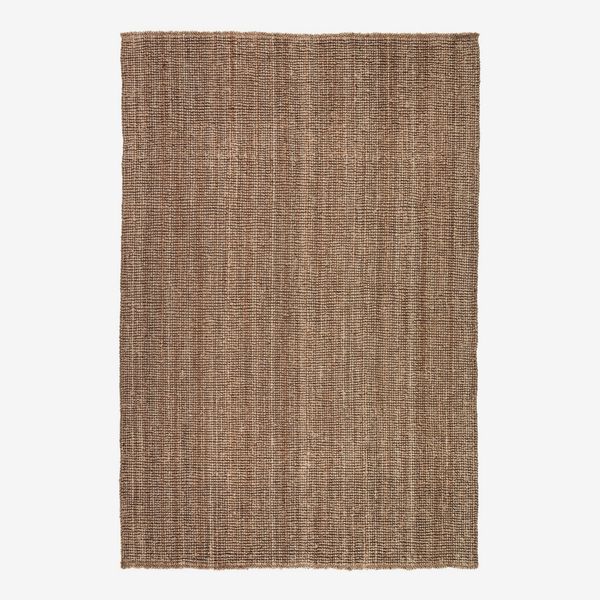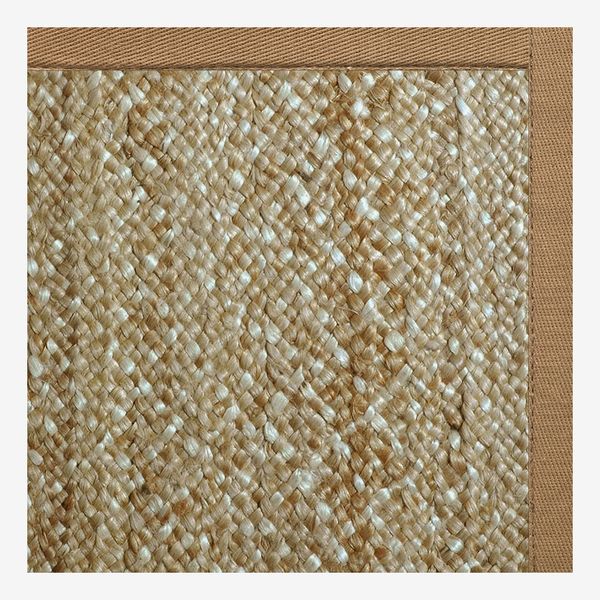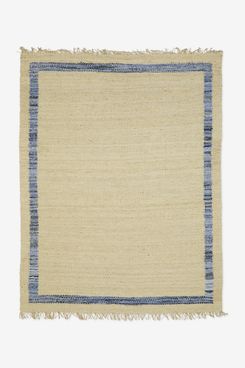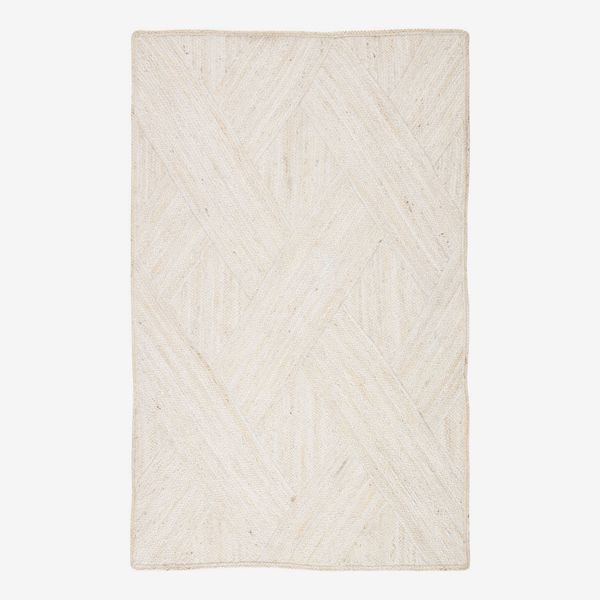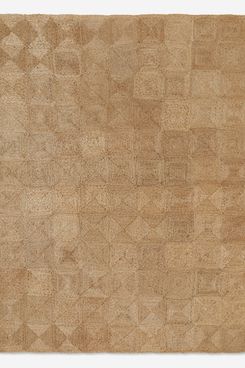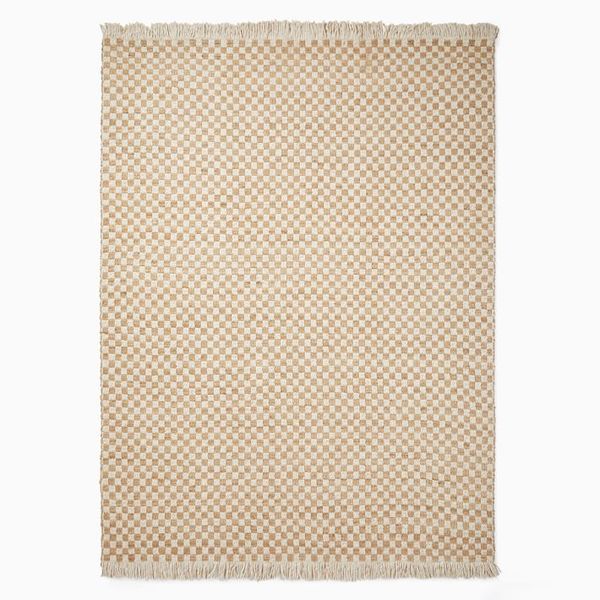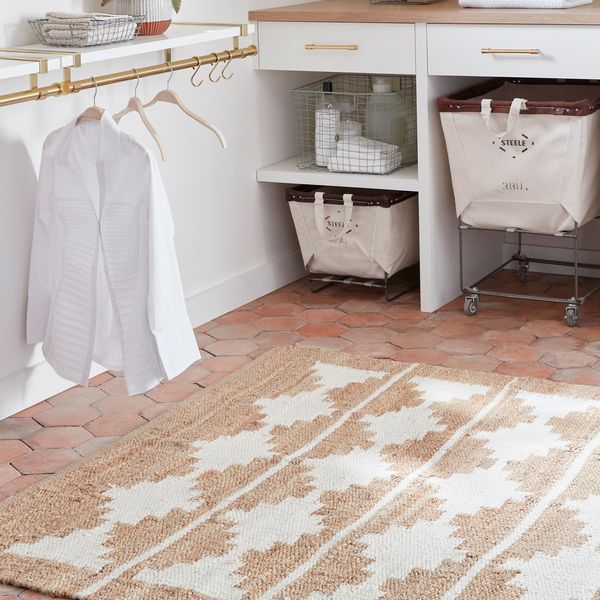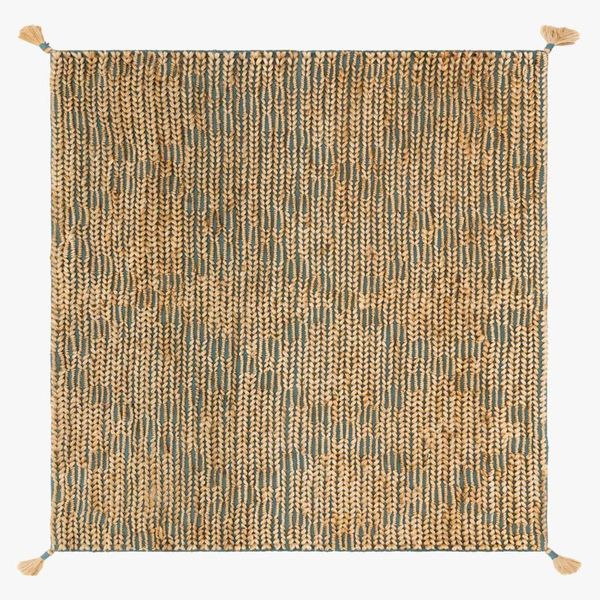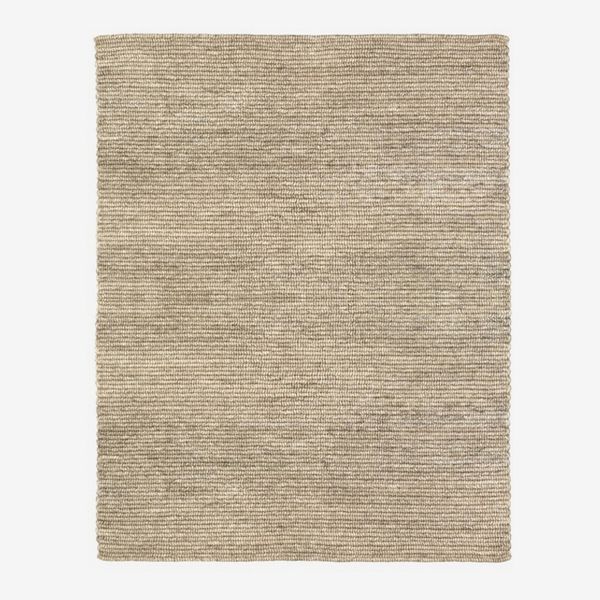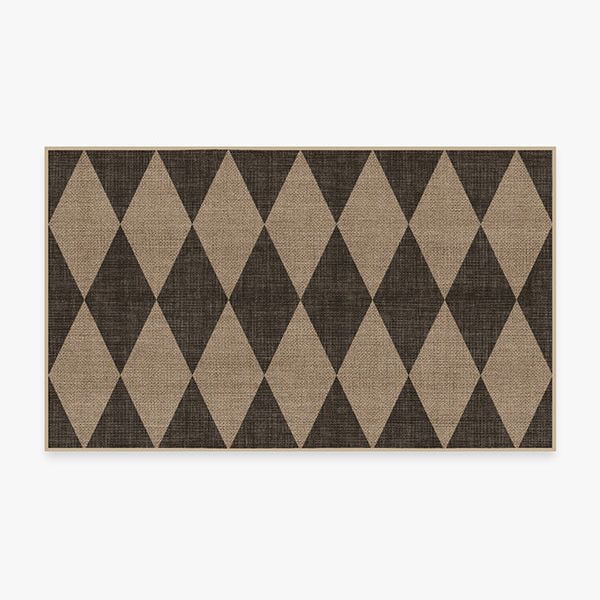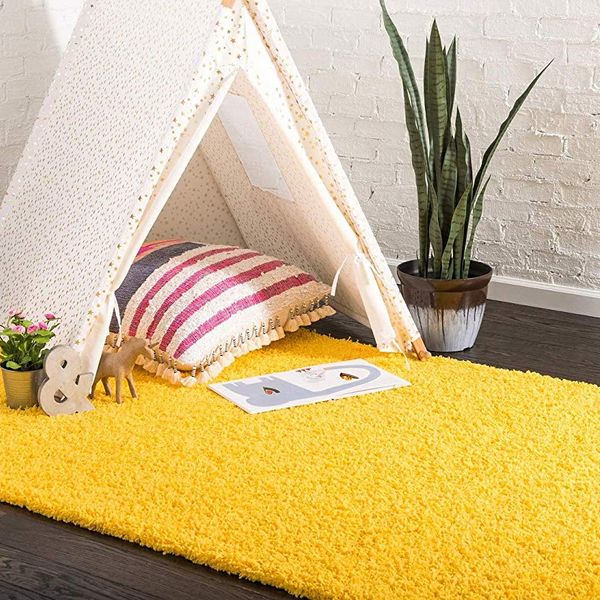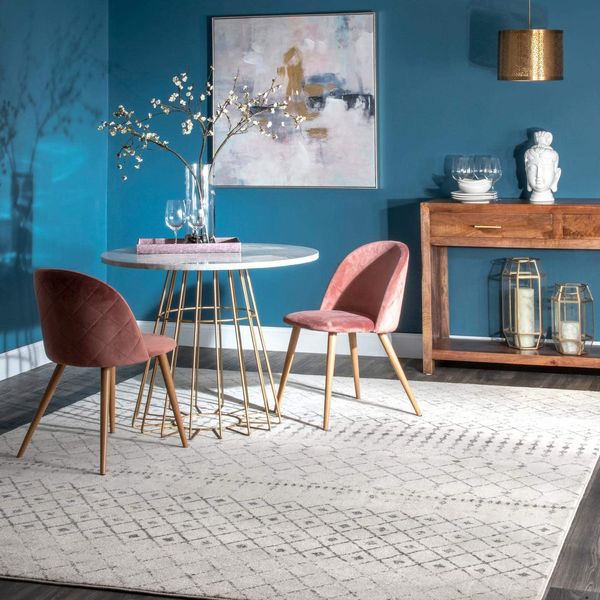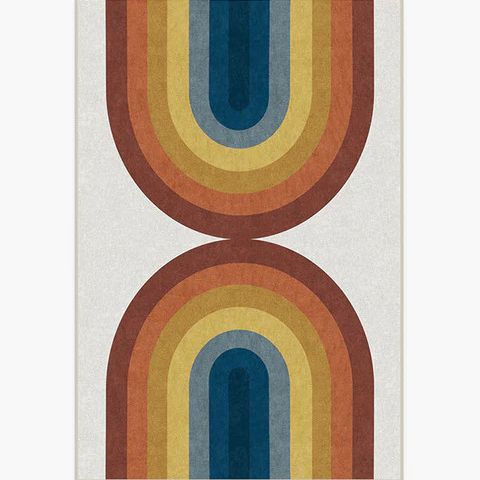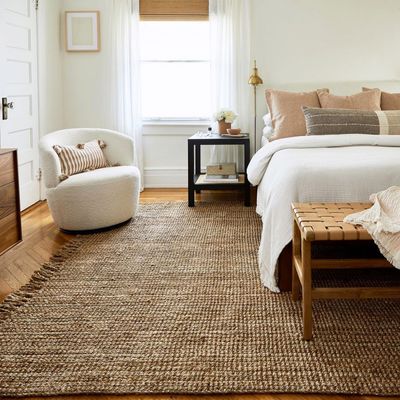
In this article
Sisal and jute rugs are like the white T-shirts of the design world. Thanks to their neutral color palette and natural fibers, they complement just about any décor scheme, are incredibly durable, and layer quite well with other rugs. And interior designers love working with them for their versatility. “Throw them over large rugs or under smaller ones to add depth, warmth, and texture,” says designer Leanne Ford. “Mix them with antiques and neutral colors or with jewel tones and lots of pattern,” says designer Lauren Ashley Allan. Whichever direction you go, “they’re an easy way to add an imperfect touch to a room,” adds Decorilla lead designer Devin Shaffer.
Another standout feature: They’re budget-friendly compared to most other types of area rugs, including ones made of wool, cotton, or silk. Many picks on this list are under $600 for an eight-by-ten-foot rug, and you don’t necessarily need to pay more than that to get something great looking. In terms of where to place them, you can really use them anywhere. “Mix and move them between main rooms or secondary rooms such as bedrooms,” says Allan. “Or try dressing them up or down.” To help you choose the right natural-fiber rug for your home, I’ve laid out the differences between sisal, jute, and abaca rugs, tested a few myself, and talked to Shaffer, Ford, Allan, and 17 other décor experts about their favorites. Read on for the 15 best sisal, jute, and abaca rugs, plus advice on how best to incorporate them into your space. A note: All prices start at the smallest size offered, typically two by two feet or two by three feet.
What we’re looking for
Material
As far as choosing between area rugs made from sisal, jute, and other natural fibers such as abaca, the experts we spoke with say to consider the space you’ll use them in — for aesthetics, of course, but also because certain fibers may be better in certain locations. “Generally speaking, sisal rugs,” which are made from the fibers of the agave plant, “are a bit more durable than jute rugs, so they’re good for high-traffic areas of the home,” according to prop stylist Cat Dash. Allan agrees, and because she says sisal rugs are the most durable of the group and have a tighter weave than the others, she likes to use them on the stairs as a runner. Seagrass is another similarly hardy option that is known to be nonporous and somewhat stain-resistant.
Rugs made from jute (which comes from the stem of the jute plant) or abaca fibers (which come from the abaca plant), on the other hand, are usually softer to the touch, making them “more comfortable for bare feet, so there’s a trade off,” Dash says. Interior designer Allison Tick, meanwhile, says she loves how “thick and smooth” jute can be. Because jute rugs have a softer feel, they’re a bit more pliable than sisal but less durable and harder to clean. That’s why the experts I spoke to say that jute rugs work better in lower-traffic spaces such as bedrooms as opposed to hallways and living areas. Allan’s preference is for rugs made out of jute because of its overall lighter color, texture, and sheen, but she recommends always requesting samples to make sure your choice isn’t too scratchy.
If you’re looking for a “chunkier, more textural surface,” Allan recommends abaca, which is a thicker fiber with a bit of sheen. Similarly to jute rugs, they feel soft underfoot and are not as durable as sisal, working better in medium- to low-traffic areas of the home. If you like the look of these rugs but are nervous about their feel (even after trying a sample), consider one that’s blended with a softer material such as cotton or wool.
Style
The rugs come in a variety of styles and color options no matter the fiber you choose. You can certainly go for a plain-woven or hand-braided rug, but some come with fringe while others come with patterns like checkers or a more traditional motif. And as mentioned above, sisal will generally have a more tightly woven look, while jute and abaca will be a little chunkier. The way the edges are finished matter, too. A serged edge, where yarn wraps around the border of the rug, has a more polished look, says Denver-based interior designer Jess Knauf, while a natural edge, or fringe, can be “pretty in more rustic design.” Knauf personally avoids binding on the edge (sewing a strip of binding tape, usually cotton canvas, to the border), as it “tends to show more dirt and stain more easily, especially in high-traffic areas.”
Customization
Another benefit of natural-fiber rugs is their customizability. Because of the plain weave of many of these rugs, they come in various preset sizes, but some allow for even further customization by letting you choose specifications including dimensions and trim.
Best sisal rug overall
Material: Sisal, tightly woven | Style: Solid, Four colors
While rugs made of sisal, jute, and other natural fibers can look very similar, sisal rugs are made with a harder weave and have a more polished look. Crate and Barrel’s sisal rug has the nicest, tightest weave among the ones I tested, and I liked how neat it looked. It also felt quite hardy, which is why sisal is great for areas like hallways and living rooms. While it’s definitely the scratchiest of these types of rugs, it didn’t feel too stiff underfoot, though I wouldn’t necessarily want to lie down on it.
For its look and durability, it’s the sisal rug of choice for two of the experts I spoke to as well. Interior designer Tara Smith likes that its more textured boucle weave “elevates this rug a step above your standard sisal,” and that it’s durable “yet sophisticated enough to go in any high-traffic area of your home.” Interior designer Becky Shea particularly likes it for layering, saying it’s “a great rug to have as a foundation in a living or family room, and can be layered with a kilim or vintage Turkish rug to injecting a little color into a space.” It comes in four different colors, including the linen shown here, which I like the best, as it’s a little softer and grayer than the other beige-tinged options. Sizes start at six by nine feet for $499 and go up to ten by 14 feet for $999.
Best customizable sisal rug
Material: Sisal, tightly woven | Style: Solid, eight colors | Customizable: By size
If you need a nonstandard size, Pottery Barn’s custom sisal rug is a great option that comes in 15 length and width options from two feet up to 16 feet. It has a larger, looser, more textural weave that I think gives it a more laid-back vibe — and perhaps scratchier feel — than the Crate and Barrel sisal. Three of the interior designers I spoke to, including design historian Alessandra Wood, Jessie Schuster of Jessica Schuster Design, and Shea, all like working with this particular rug. Schuster calls it a great option “if you’re on a budget. They are a nice quality, and you can customize the size within a short lead time.” Prices range from $39 for the smallest size (two by two feet) to $2,549 for the largest (16 by 16 feet). It comes in eight colors, including deeper shades like mocha, bronze, and gunmetal.
Best patterned sisal rug
Material: Sisal, patterned | Style: Solid, One color | Customizable: 14 sizes
Sisal rugs can also be patterned beyond the traditional basket weave. Denver-based interior designer Jess Knauf, who prefers working with sisal over jute and abaca because of its durability and stain resistance, tells me that Ballard Designs makes some of her favorite “nicely finished” options. She recently installed the brand’s Dori model, which has an unexpected jacquard weave in a fishtail pattern (and is actually blended with a little bit of jute, depending on the size), in her own living room. “I like that it has a serger-finished edge, which has a more polished look,” she says. “I went with the natural, which sort of lets all the other fabrics in the room stand out. It has held up beautifully.” Knauf also appreciates that the rug has a nonskid rubber backing to keep it in place, which means she doesn’t need to use a pad. The rug comes in 14 sizes, from two feet by three feet up to 12 by 18 feet.
Best seagrass rug
Material: Seagrass | Style: Paneled, solid | Customizable: Six sizes, with extra paneling you can sew together
For an even more casual, tropical look, consider this seagrass rug from Rush House that suddenly seems to be everywhere. It’s featured in a few Architectural Digest house tours, in the homes of stylish people like Daphne Javitch and Julie O’Rourke, and in the Hudson Valley restaurant Stissing House. The reason for its popularity is its versatility and affordability. It looks just as convincing in a country-style home in the South as it does in a mid-century-modern pad in Los Angeles. (The style has been around since the ’70s and is also known as seagrass mats.) I first noticed it at the home of my friend Sunny Kang, who tracked it down after seeing it in a magazine because she “loved the price point, especially for such a big rug.” She also appreciated the fact that it can be customizable to fit any space. She bought two for her dining room and sewed them together herself with twine. Maintaining it is just as easy, too: “We’ve dropped plenty of food on it, and you wouldn’t notice at all,” she says. All she does is vacuum it. As for how it feels, the rug has a more grassy, strawlike texture than sisal, and a looser, more open weave. For added comfort and longevity, Rush House recommends using the rug with this rug pad, which you can also buy on the store’s website. Available in six sizes and even single panels, the rugs can be expanded by sewing full rugs or squares together, as mentioned above, using the twine-and-needle set. As for pricing, the largest size of nine feet by 12 feet, costs $425, among the cheapest on this list for that size.
Best jute rug overall
Material: Jute | Style: Chunky, solid | Customizable: Three sizes
Jute will feel softer underfoot and have a chunkier weave than sisal and seagrass rugs. This all-jute rug from Ikea came recommended by two of our experts — Tammy Price of the Los Angeles–based Fragments Identity and Dash — for its affordability. It’s Dash’s go-to because “it’s super-versatile and works all over the house,” she says. “I generally use this one as a layering piece and put a smaller rug with an interesting pattern over it. I actually have it in my living room with a vintage Persian rug layered on top.” The rug is available in three sizes; the smaller one is four feet four inches by six feet five inches and goes for $70.
Best chunky jute rug
Material: Jute | Style: chunky, solid, tasseled, nine colors | Customizable: Multiple shapes and sizes
This chunky jute style comes with tasseled ends and is recommended by interior designer Jamie Drake of the Manhattan-based firm Drake/Anderson who appreciates the minimalism of “the most natural and basic jute rugs.” New York Magazine deputy editor Alexis Swerdloff is also a fan after buying the rug for her own home. It looks more expensive than it is thanks to its handwoven design and the varied tones of the undyed natural fibers. This style starts at $70 for a rug that measures two by three feet.
Best customizable jute rug
Material: Jute | Style: Chunky, four colors | Customizable: By size, shape, rug color, border color, material, and width
Interior designer Elaine Griffin’s go-to source for natural-fiber rugs is Sisal Rugs Direct, which she likes “for the variety and customization options” and the fact that the rugs are “totally reasonably priced.” I turned to Sisal Rugs Direct myself when I needed a very specific size for a landing on my staircase. I was able to input my desired size — down to the inch — and pick my rug color (from four options), shape, and border material, color, and width. It cost less than another competitor I looked at, and it arrived in exactly four weeks. I’ve had this for two years now and it still feels soft underfoot and has held up great, especially considering it’s in a highly trafficked area of my home.
Best jute rug with border
Material: Jute | Style: Chunky, border pattern, tasseled, 3 colors
Three of our experts — Schuster, Dash, and Seyie Putsure of the Los Angeles–based Seyie Design — recommend Serena & Lily as a place to find jute rugs along with others made of natural fibers. For something with a little more personality, Dash recommends this rug with an inner border that she says “feels almost preppy” but is counterbalanced by its natural weave, which “keeps it from veering towards stuffy.” She adds that it would lend a “pulled-together yet unfussy vibe” to any room. This style starts at $88 for a two-by-three-foot rug.
Best patterned jute rug
Material: Jute | Style: Chunky, patterned
Architect and interior designer Maria Augusta Louro of the New York– and Brazil-based firm Guta Louro says she likes to incorporate natural-fiber rugs in her projects because of their durability. She’s a fan of such rugs for their “earthy tones and rustic characteristics,” telling us this jute rug ups the aesthetic ante because its interwoven trellis design makes it look like pricer wool and silk rugs. The smallest size is two by three feet and goes for $112.
Best geometric-patterned jute rug
Material: Jute | Style: Chunky, solid, spiral pattern
Interior designer Christiane Lemieux, who has her own line of home furnishings (including graphic rugs), turns to this more basic — but still interesting — piece from Lulu & Georgia as a solid option for her clients. The handmade rug designed by Jake Arnold is her go-to. “I love how this rug is basic luxe,” she says. “It’s almost solid but has a subtle woven geometric pattern in it that adds an extra layer of design.” And she says that it has “a lovely heft that makes it feel excellent underfoot.” Lemieux calls out its “neutral, natural color and material” that she says looks “great for California casual or coastal-design moments,” adding that natural rugs “provide warmth, texture, and natural elements to every space.” It’s woven in a similar pattern to the Rush House seagrass rug, so if you like the look of that but prefer a softer handfeel, this jute one would be a good option.
Best blended jute-wool chunky rug
Material: Jute-wool blend | Style: Chunky, checkerboard, tasseled
If pure jute feels a little too scratchy, consider a rug that’s blended with a softer material like wool. This is a favorite of Allan’s, who says it feels more plush underfoot, because it’s handwoven and 50 percent wool. “This rug is a beautiful take on a tonal checkerboard pattern,” she says. “It’s warm, edited, and beautifully imperfect.” Allan suggests putting the chunky rug in a family or living room, hearth, or even dining room if you want to add “a subtle textural backdrop” to the space.
Best blended jute-wool flat-weave rug
Material: Jute-wool blend | Style: Flat-weave, patterned
Here’s another jute-wool rug that’s flat-woven, making it a good option for a high-traffic space thanks to its higher ratio of jute to wool (77 percent jute and 23 percent wool). Strategist writer Emma Wartzman bought it in the white pattern for an open area by her front door between the living room and kitchen entryway, and over a year later, she says it still looks great. “I wanted something to mark the space but also wanted it to be hardy enough to withstand inevitable foot traffic and shoes,” she says. “I vacuum it once a week and I’m honestly surprised the white parts aren’t dirty, which I was nervous about at first.” Wartzman says that it’s “quite soft and looks substantial — the weave isn’t dinky.” While the white pattern is sold out, it’s still available in black.
Best colorful blended jute-cotton rug
Material: Jute-cotton | Style: Chunky, patterned, tasseled
Justina Blakeney, the owner of Jungalow (a favorite Black-owned décor business), designed this rug in collaboration with Loloi, a rug company that interior designer Leah Alexander loves for its “variety, dependability, and for featuring collections from a diverse group of makers.” It’s made of a cotton-jute blend and has a raised trellis design on a dusty green backing, allowing a subtle layer of color to peek through. “The jute rugs by Justina Blakeney are gorgeous, understated, and hardworking,” Alexander adds. The smallest size is five feet by seven feet six inches and goes for $599.
Best abaca rug
Material: Abaca | Style: Chunky, solid
Echoing the sentiments of our other experts, designer Aerin Lauder says she turns to natural-fiber rugs to “instantly provide a neutral look that is practical and elevated.” Her favorite is this abaca rug from Williams Sonoma (for which she designed the Aerin Collection, but this rug is not from that line). “I think that the tones and texture are perfect in any space,” Lauder says. “The rug provides a natural yet comfortable and effortless feel.” Sizes start at three by ten feet, which goes for $895.
Best washable jute-like rug
As versatile and durable jute, sisal, and abaca rugs are, they’re very difficult to clean, as water and other liquids can ruin them. If you like the look of these types of rugs but want something easier to maintain, consider this washable rug from Ruggable’s “Re-Jute” collection that features floor coverings woven from recycled and virgin polyester and plastic water bottles. Production designer Anastasia White owns this runner with an Italian-inspired palazzo pattern and uses it in her kitchen. She loves the “super flat weave” that feels like the real jute rug in her dining room, only smoother, which makes it “so easy to wipe” while toning down “the stark whiteness of the kitchen.”
Some more rugs we’ve written about
Our experts
• Leah Alexander, interior designer
• Lauren Ashley Allan, interior designer
• Cat Dash, prop stylist
• Jamie Drake, Drake/Anderson
• Leanne Ford, interior designer
• Elaine Griffin, interior designer
• Jess Knauf, interior designer
• Aerin Lauder, designer
• Christiane Lemieux, founder of Lemieux et Cie
• Maria Augusta Louro, architect and interior designer
• Tammy Price, Fragments Identity
• Seyie Putsure, Seyie Design
• Jessie Schuster, principal of Jessica Schuster Design
• Devin Shaffer, lead sales designer Decorilla
• Becky Shea, interior designer
• Tara Smith, interior designer
• Allison Tick, interior designer
• Emma Wartzman, Strategist writer
• Anastasia White, production designer
• Alessandra Wood, design historian
The Strategist is designed to surface the most useful, expert recommendations for things to buy across the vast e-commerce landscape. Some of our latest conquests include the best acne treatments, rolling luggage, pillows for side sleepers, natural anxiety remedies, and bath towels. We update links when possible, but note that deals can expire and all prices are subject to change.

